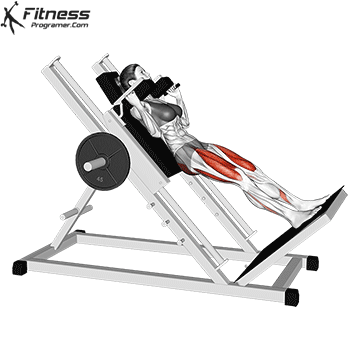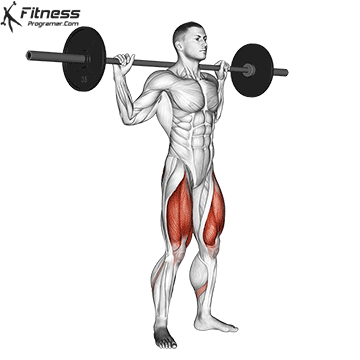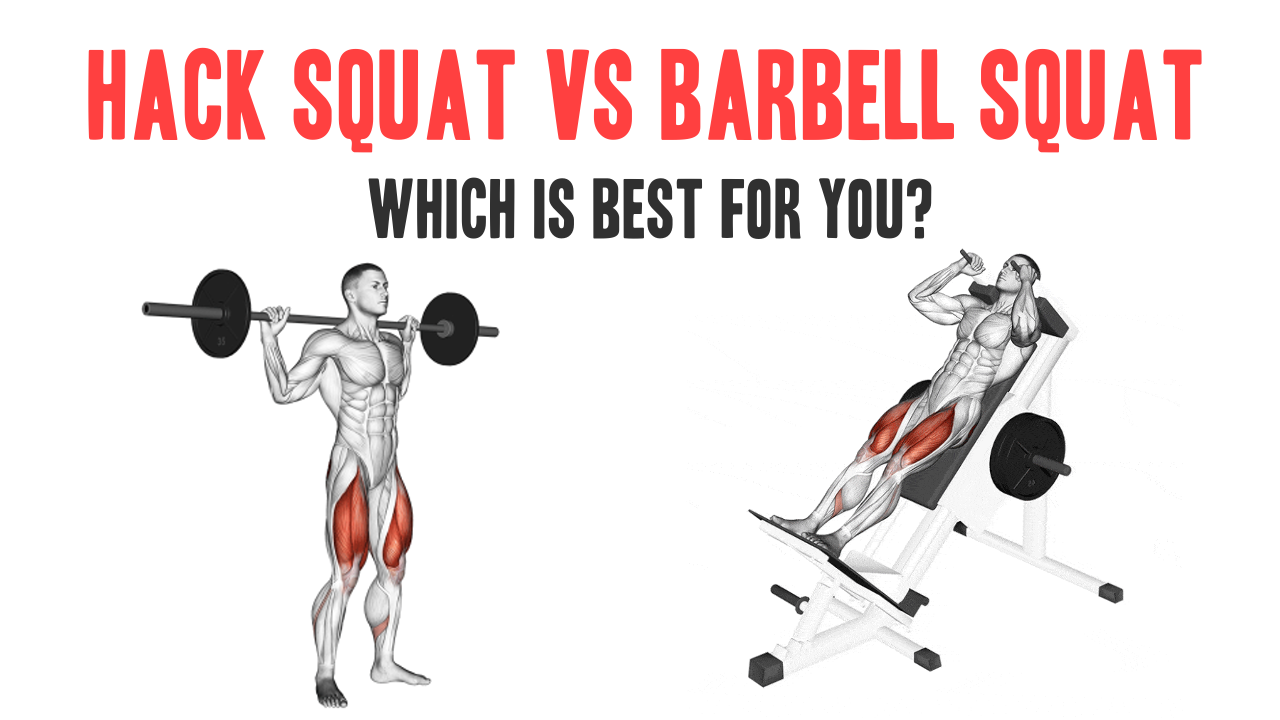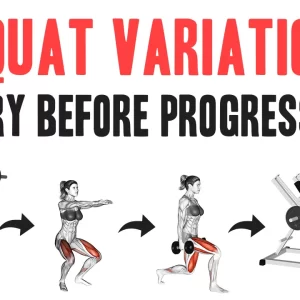Contents
When it comes to lower body exercises, two staples of leg day are the hack squat and barbell squat. Both exercises work the quads, glutes, and hamstrings but each one comes with its own unique benefits and drawbacks. So which one should you be doing for your fitness goals? Let’s take a closer look at how these exercises compare.
To start, it’s helpful to know the proper form for performing a hack squat. For a refresher on how to do a hack squat, check out this guide on hack squat form from Flex Fitness App. A post that explains the technique step by step so you can work your legs safely and effectively.
In this article, we’ll share research-based information and some tips to help you choose the right one for your goals.
Biomechanics of Exercises
The hack squat is a closed-chain exercise, like the barbell squat. In closed chain exercises, the feet stand on a stable ground and the movement occurs in a single joint (1). These exercises require more stability and balance compared to open chain exercises (exercises in which the feet move freely).
At their core, both hack squats and barbell squats involve hinging at the hips and knees to lower your body until your thighs are at least parallel to the floor, then driving back up by extending your legs. But there are some important differences in how each exercise is performed:
- Barbell squats require you to hold a weighted barbell across your trapezius muscles and shoulders. This engages your core muscles to keep you balanced and upright throughout the movement.
- Hack squats place the load on your shoulders and upper back via shoulder pads on the machine. This reduces the core demand compared to barbell squats.
- Stability: Free weight barbell squats are less stable than hack squats due to the balancing act. Your core and stabilizer muscles work harder to control the barbell.
- Range of motion: Most hack squat machines allow for a deeper squat that hits a fuller stretch in the hips and quads compared to barbell squats.
While both target the legs, barbell squats are a full-body exercise that challenges your core stability more, whereas hack squats isolate the lower body muscles.
| Exercise: | Hack Squats | Barbell Squats |
|---|---|---|
| Target Muscles | Quadriceps, Glutes, Hamstrings | Quadriceps, Glutes, Hamstrings, Core |
| Spine Health | Gentle on the spine, reduces axial loading | Requires spinal stabilization, may increase axial loading |
| Knee Health | Reduced stress on the knees | Similar stress on the knees as traditional squats |
| Core Activation | Minimal | Significant |
| Accessibility | Requires a hack squat machine | Can be performed with just a barbell and squat rack |
Advantages of Hack Squats: Spare the Spine
One major advantage of the hack squat is that it takes stress off the lower back compared to a barbell squat. With a barbell placed across the upper back and shoulders, squats can fatigue the spine over time for those with back issues or imperfect form. However, hack squats shift the load to stabilizers in the legs instead of stressing the lumbar region.

For athletes and casual lifters with pre-existing back pain, hack squats may be a safer alternative that still works the quads hard. Research assessing muscle activity between exercises found that hack squats put significantly less strain on the lower back muscles during exertion (2). So if you want to focus on quad development without aggravating back discomfort, hack squats give the joints a break.
Hacks Work the Quads Harder
When it comes strictly to hypertrophy goals, hack squats may edge out barbell squats for their isolation of the quadriceps muscles. Studies point to higher quad activation levels during hack movements due to the stabilized support which allows for deeper ranges of motion. The constant tension placed on the quads without much lower back involvement stimulates muscle fiber recruitment and growth.

If your priority is packing size onto those thighs, hack squats provide a focused leg day finisher that lets you push higher rep ranges safely. While squats work all the lower body groups, hacks hone directly in on the quadriceps with less energy lost to stabilizing smaller muscle engagement. So as an accessory lift after barbell squats, hack squats deliver an awesome quad burner.
Advantages of Barbell Squats: Build a Sturdy Core
While hack squats are lower impact, nothing trains the core quite like barbell squats. Having to balance and control heavy weight teaches the body to efficiently transfer force through the kinetic chain. The core, glutes, and hamstrings all fire in tandem to keep the spine neutral and stable under load. Over time, this cross-sectional strength carries over to improved posture, resistance to injury, and more power in multidirectional movements.
Research has surprisingly shown trunk muscle activation to be higher in free weight squats versus machines (3). So for developing a bulletproof midsection that supports advanced lifting and sports performance, barbell squats take the cake. The challenging balance component may be more intimidating at first but pays off for functional whole body development.
Which Exercise Fits Your Goals?
Hack Squats: IDEAL FOR BEGINNERS

Hack squats are a great exercise for beginners because they allow you to learn proper squat technique on a machine that provides support. If you’re new to weight training, hack squats provide a controlled start compared to barbell squats.
Provided they focus on proper technique from the start, even novice lifters can reap benefits from hack squats. The machine provides stability that free weights lack, reducing risk of injury compared to barbell squats.
Generally speaking, the hack squat is an easier movement than the barbell squat. This makes hack squats a great option when you want to take your leg day to the next level.
Start with very light weights to learn the movement pattern. Gradually increase weight slowly over multiple sessions as balance and strength improve. Just concentrate on form above all else.
Barbell Squat: Increases functional strength

Functional movements are known as superior exercises due to the benefits they provide to the whole body. This compound exercise is a functional exercise that mimics everyday movements, working multiple muscle groups including quadriceps, hamstrings, glutes, and core muscles.
Although it offers some advantages, the limited range of motion on the machine does not mimic real-life squatting movements. This can be a disadvantage in terms of overall athletic performance and functional strength. If you want to exercise your core area more, you can choose barbell or dumbbell squat movements that you can do without support.
In Summary:
Both hack squats and barbell squats have their place in a well-rounded lower body routine. For full-body strength and functionality, barbell squats reign supreme by challenging your core stabilizers under weight. But when recovering from back issues or targeting quad hypertrophy, hack squats present a lower-impact quad isolation option.
References
- The Effect of Open and Closed Kinetic Chain Exercises on Dynamic Balance Ability of Normal Healthy Adults
- Evaluation of Muscle Activities During Different Squat Variations Using Electromyography Signals: DOI:10.1007/978-3-030-35249-3_114
- Clark, D.R., Hunter, A.M. and Lambert, M.I. (2019) Trunk muscle activation in the back and hack squat at the same relative loads, Journal of strength and conditioning research.



